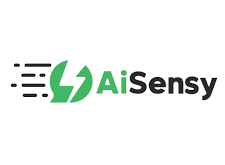The pandemic has alerted everyone to the importance of digitisation. However, with this, the glaring skills gap was also brought to light. Companies quickly realised that they needed to invest in the up-skilling and re-skilling of their workforce if they had to meet the demands of the emerging market. This spurred the growth of the ed-tech industry in India. The valuation of Indian ed-tech companies was estimated to be around 750 million dollars in 2020. This figure is expected to increase at a CAGR of 39.77% and reach approximately 4 billion dollars by 2025. One of the factors contributing to this growth is the widespread availability of the internet and smartphones. For example, by 2020, the number of internet users in India was around 622 million and is estimated to reach 900 million by 2025. A large percentage of this figure is staying in small towns or are from rural India.
GenZ and the need for up-skilling
The millennials and GenZ, who are a part of the workforce in India, have also contributed significantly to the growth of the ed-tech sector. Estimates suggest that in 2020, 67% of GenZ learners spent more time on online learning as compared to the previous year. It is suggested that this group spends 50% more time on online courses as compared to any other age group. Further studies have suggested that around 83% of this group have indicated that they want to up-skill through online classes, to improve their performance in their current job. Those in the creative fields are no exception to this. According to the LFS statistics published by ONS in 2021, the upskilling trends in the field have continued to grow since 2020. This indicates that those in the creative fields are willing to learn and grow within their interest areas and are not abandoning them.
Why is GenZ choosing to go digital?
The young population has shown a preference for digital courses, as these courses allow flexibility and personalization in learning. Learners can choose the teaching modality, and access pre-recorded lectures and learning material at their own pace. These courses give them the exposure needed to make a career in the field. It accords them with the opportunity to interact with and learn from industry professionals. These courses are designed to combine theoretical knowledge with practical exposure, enabling learners to apply their knowledge outside the classroom. One of the key benefits of “going online” is that learners can take up these courses while they are engaged in other courses or jobs. For the generation that loves to multitask and have-it-all, this is a boon. It also allows them to connect with others in the field and make the right contacts which can be essential in supporting them through their careers.
Bottom-line
In conclusion, it can be said that in the post-pandemic world, the ed-tech industry has experienced a boom, and a major reason for this, in addition to the widespread availability of the internet and smartphones, is the entry of millennials and GenZ into the workforce. This cohort prefers digital courses as these platforms can meet their up-skilling needs and prepare them to meet the challenges of competing in the global market.
By Akshay Marwah & Mohit Marwah, Co- Founders & Co-CEOs, AAFT Online
 Newspatrolling.com News cum Content Syndication Portal Online
Newspatrolling.com News cum Content Syndication Portal Online






